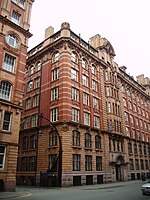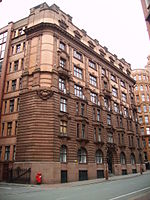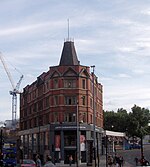New Broadcasting House, Manchester
1976 establishments in EnglandBBC offices, studios and buildingsBuildings and structures completed in 1976Buildings and structures demolished in 2012Demolished buildings and structures in Manchester ... and 5 more
EngvarB from October 2017Former buildings and structures in ManchesterHistory of ManchesterMass media in ManchesterTelevision studios in Greater Manchester

New Broadcasting House (NBH) was the BBC's North West England headquarters on Oxford Road in Chorlton-on-Medlock, Manchester. The studios housed BBC Manchester, BBC North West, the BBC Philharmonic Orchestra and the BBC Religion and Ethics department. It was known as a Network Production Centre, the others being in Birmingham (the now also demolished Pebble Mill Studios) and Broadcasting House, Bristol. New Broadcasting House was vacated during autumn 2011 when the departments were relocated to MediaCityUK outside of central Manchester in Salford Quays. The building was demolished in 2012.
Excerpt from the Wikipedia article New Broadcasting House, Manchester (License: CC BY-SA 3.0, Authors, Images).New Broadcasting House, Manchester
Valette Walk, Manchester City Centre
Geographical coordinates (GPS) Address Nearby Places Show on map
Geographical coordinates (GPS)
| Latitude | Longitude |
|---|---|
| N 53.47312 ° | E -2.23925 ° |
Address
Valette Walk
Valette Walk
M1 7GA Manchester, City Centre
England, United Kingdom
Open on Google Maps










